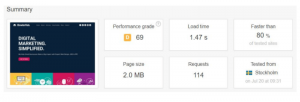By Angela Vuona, Published October 25, 2014

First, what is the goal of a landing page? Simply put, it is to convert a website visitor into a lead by capturing contact information in a form. When it comes to landing page optimization, there’s no end in sight. You can always optimize, A/B test, and optimize some more. But the truth is, there will still be something else you can improve.
After a few months of collecting conversion analytics, you might start to notice room for improvement. Start by analyzing your most visited landing pages and work your way down. Let’s dig a little deeper than the basics.
Here are five landing page best practices you might have missed:
- “The Blink Test” – Within 3 to 5 seconds, a visitor should know exactly what they will get by filling out a form on your landing page. Do you pass the test? You can practice this by printing out your landing page and passing it around to colleagues. If they fail the test, perhaps you should cut down on some copy, add more bullet points, or re-word your value proposition so it is more clear.
- A/B Testing – It’s possible that the use of different colors, design layouts, or action-verbs for CTA’s could drive more conversions on your landing page. In the world of A/B testing, data is your best friend, and you can continue to test, analyze, and optimize as much as you please.
- Social sharing icons – This simple little addition can have a big impact on creating a higher converting landing page. Why? Because it adds social proof. You should include all of the social platforms that are relevant to your target audience, and of course, don’t forget an email forwarding option. This enables your prospects to evangelize your content and offers and what’s better than free press in this case?
- Progressive profiling – There is nothing more unattractive on a landing page than an obnoxiously long form. In general, the fewer form fields you have on a form, the higher the conversion rate. With progressive profiling, you have control which questions appear on a form based on what you already know about a lead. That way, each time a lead fills out a form, you are collecting valuable new information while keeping your forms short and easy.
- Unique landing pages – A major benefit of separating landing pages is the ability to segment your traffic and optimize accordingly. For example, prospective customers arriving via a 140 character tweet may require a lot more detail before they are convinced by your value proposition. Alternatively, this is very different to someone who might have clicked through to your page from an email subscription. As such, you should try to use separate landing pages for each source of traffic.
As you can see, there are many tactics you can use to improve your landing page performance after its initial creation. Once you start gathering lead intelligence and analytics, you can start making minor tweaks based on your marketing and sales goals. Practice makes perfect, and always remember, with landing pages, less is more!
What other landing page best practices – beyond the basics – would you share with marketers?
Business Articles | Business 2 Community
(315)
Report Post






